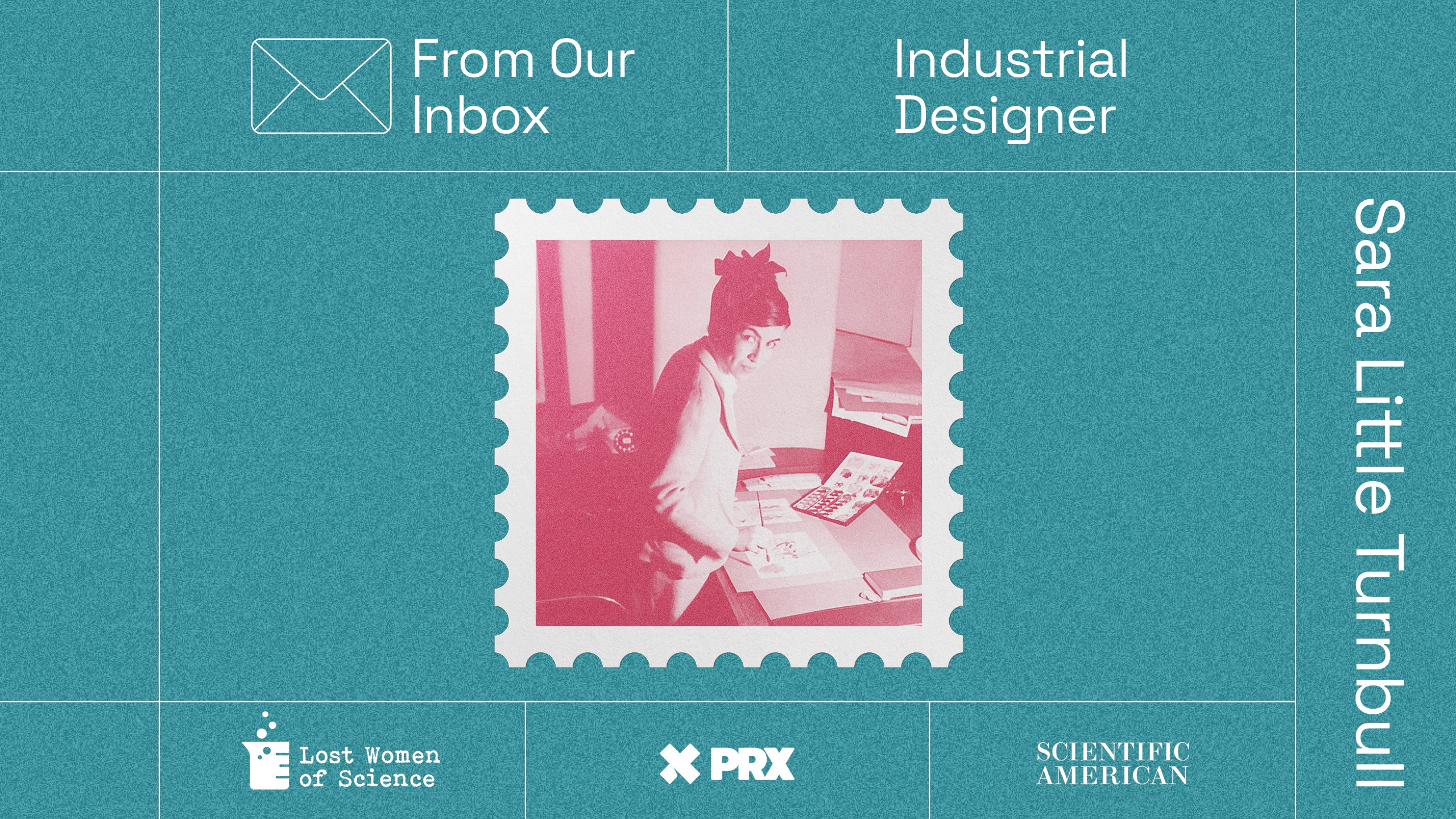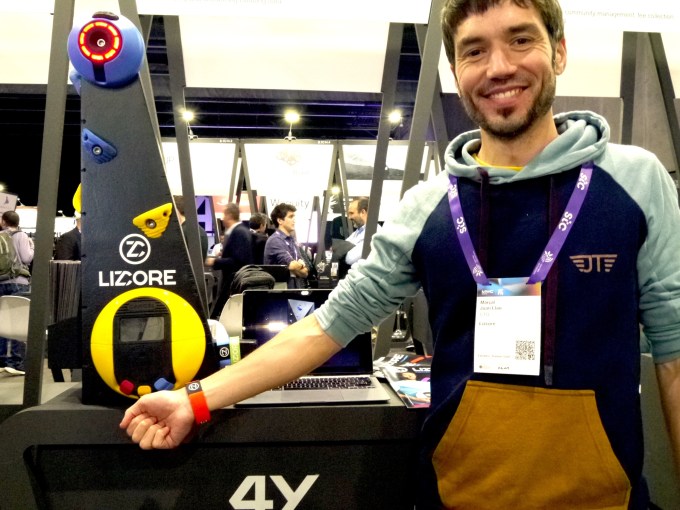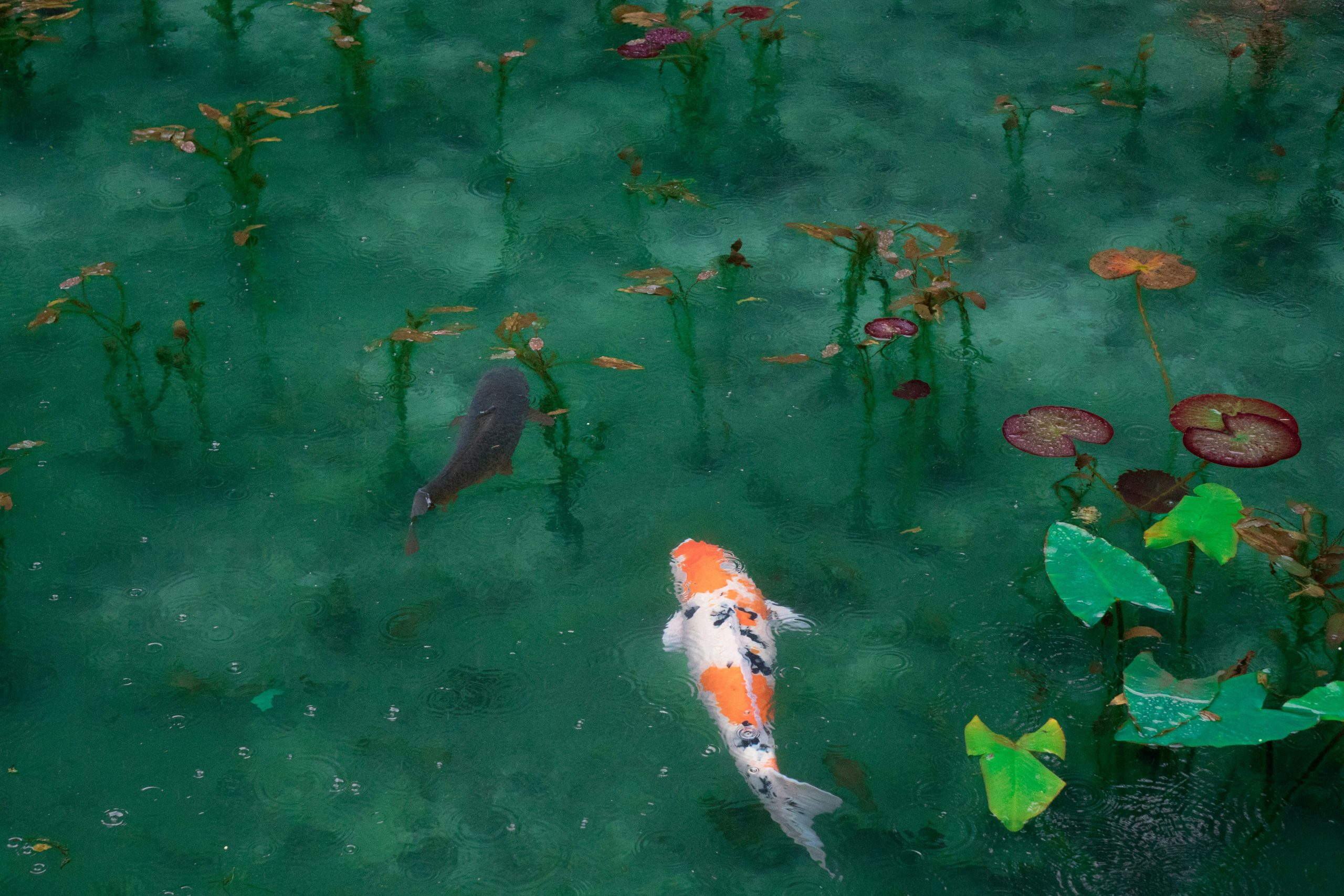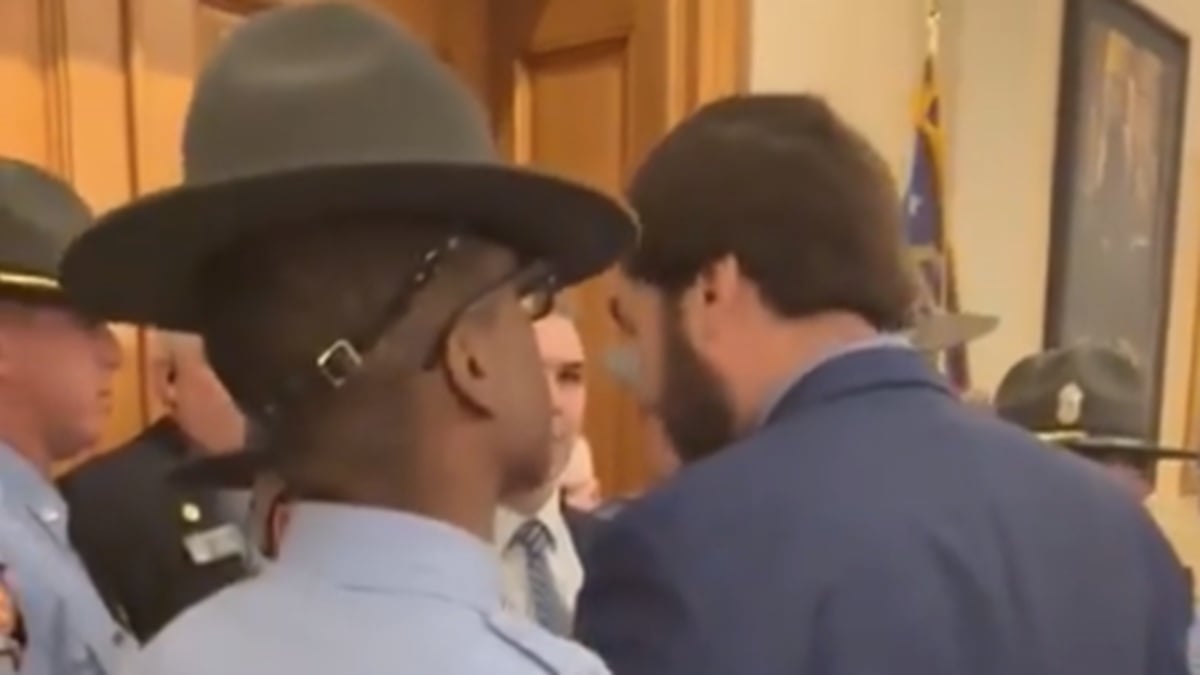
Sara Little Turnbull was a force in the world of materials science and industrial design. It’s safe to say most people have used something that started life on her drawing board, but few know her name. She worked with engineered fabrics as a consultant for 3M.
As part of these efforts she designed a molded bra cup that inspired the form of the N95 mask. Later 3M disputed her role in coming up with the N95 mask. She also worked as a consultant for CorningWare on clear-glass cooktop development, early microwave cooking products, storage systems and many other products.
LISTEN TO THE PODCAST
On supporting science journalism
If you’re enjoying this article, consider supporting our award-winning journalism by subscribing. By purchasing a subscription you are helping to ensure the future of impactful stories about the discoveries and ideas shaping our world today.
[New to this season of Lost Women of Science? Listen to the most recent episodes on Ruby Payne-Scott, Sallie Pero Mead, Vera Peters, Annie Montague Alexander, Emma Unson Rotor, Mária Telkes, Flemmie Kittrell, Rebecca Lee Crumpler and Eunice Newton Foote.]
Lost Women of Science is produced for the ear. Where possible, we recommend listening to the audio for the most accurate representation of what was said.
EPISODE TRANSCRIPT
Katie Hafner: I’m Katie Hafner, and this is Lost Women of Science: From Our Inbox, a series of mini episodes featuring women in science that came to us from you, our listeners.
On today’s episode, we hear from designer, Paula Rees, about her mentor: Sara Little Turnbull. You might not know Sara’s name, but I’d bet that you’ve heard of one of her inventions. Plus… in the process of reporting this episode, we discovered that Sara’s story illuminates an issue that we encounter a lot when looking at science history…
Producer Johanna Mayer brings us her story.
Johanna Mayer: I want to tell you about this photograph I came across recently.
It looks like it was taken sometime in the 1950s or 1960s. Four business people are standing in a circle. Two of the men are smoking long cigarettes, a third is in a pinstripe suit. And they’re all looking down.
They’re looking at a woman. With a killer beehive hairdo, a giant flower pinned to her sweater, and a big beaming grin.
Paula Rees:  Sara Little Turnbull, and she was little.
Johanna Mayer: Sara was about 4’11” – she was born Sara Finkelstein, but everyone called her “Little Sara” and she made the name her own. Sara began to go professionally by the name… Sara Little.
I’m Johanna Mayer, and this is From Our Inbox, a series from Lost Women of Science. Today, we’re talking about Sara Little Turnbull, and the big legacy she left behind – from pot lids to sneakers to a product that many of us became all too familiar with when the Covid-19 pandemic hit: the N95 mask.
Paula Rees wrote to us about Sara – Paula is the principal of an interdisciplinary design firm, and Sara was her mentor.
Paula Rees: I knew Sara for 30 years. I can assure you that something in your life today was either designed or inspired by Sara Little.
Johanna Mayer: Sara grew up in Brooklyn in the 1920s, in a Russian immigrant family. They were poor, but Sara managed to find beauty and elegant design in unexpected places, like artfully arranged vegetables at the grocer. As a teenager, she won a scholarship to Parsons School of Design, where she studied advertising design. And after graduating, she worked as decor editor of House Beautiful, a popular interior decorating magazine. At the magazine, she promoted ideas that would make us more thoughtful about the way we use space and consume materials. For example, she wrote articles about the benefits of living with a roommate, and organizing small spaces.
Paula Rees: She would practice what she preached in that she led a very simple life with fewer things, but of greater quality to last longer.
Johanna Mayer: Sara lived in a 400-square-foot apartment. She had very few clothes but had them custom-made to fit her perfectly.
Paula Rees: She really abhorred planned obsolescence and material waste of resources. Her belief was that we should serve as the conscience of the companies that hire us. We need to do the right things.
Johanna Mayer: This was Sara’s guiding philosophy – doing the right thing. And in 1958, she decided to bring her ideas to companies, and started her own design consulting business. And with that career leap, Sara Little Turnbull became a key fixture in the world of applied science and industrial design.
Paula Rees: Sara was an absolute powerhouse and not at all shy about asking for what she needed.
Johanna Mayer: Basically, she was the kind of woman who could hold her own in a circle of businessmen. Big companies began to take notice. Among them – 3M, a giant company that has manufactured everything from masking tape to sandpaper to a synthetic rubber used in space boots. In 1958, they hired Sara. She worked in the Gift Wrap & Fabric Division, but she wasn’t there to wrap gifts. She was there to experiment with a new material 3M was working with: a moldable, non-woven technology.
Paula Rees: Her genius was in material science.
Johanna Mayer: Although Sara didn’t have a degree in material science, she’d worked with all kinds of materials, mainly ones that were made from fibers that were woven together, which left these teeny tiny gaps between the threads. And when she saw this new high-tech fabric, which was made from polymers that were melted together – therefore eliminating those tiny gaps – she knew it was full of potential.
Paula Rees: She had a clear understanding of the science behind the things that she was imagining and the things that she wanted to design. And she always started with the question ‘why?’
Johanna Mayer: In fact, when senior management asked Sara to give a presentation, that’s what she called it: “Why?” In the presentation, Sara dug into that non-woven technology and all its many potential uses. She came up with 100 original product ideas, including one whose effects would resound across the globe: the moldable bra cup. Instead of an overly rigid and uncomfortable shape, the moldable cup fit snugly to the breast–and with fewer seam lines at that!
But according to Paula, that moldable bra cup would pave the way for another invention – one with much farther-reaching effects…
Paula Rees: Sara was way ahead of understanding what was coming. She was so much more influential and accomplished than people know.
Johanna Mayer: While she was working with 3M, Sara was also taking care of three sick family members. Both her parents and her sister were dying, all at the same time, which meant that Sara spent a lot of time in hospitals. And she began to notice the masks the doctors were wearing – a flat piece of fabric, with a tie in the back.
Maybe it was the boredom of long hours spent in hospital rooms; maybe it was a racing brain that couldn’t be tamed; maybe it was a project designed to distract herself from her own intense grief – we can’t say for sure. But Sara had an idea. What if she could take that moldable bra that she’d designed… and turn it into a better medical mask?
Johanna Mayer: In 1972, 3M produced a mask… and it looked a whole lot like a moldable bra cup! 3M would tweak the mask over the next few years, but it appeared that Sara’s vision–her product born of a real-life problem–had come to fruition.
When the COVID pandemic hit in 2020, news outlets published countless stories about Sara’s contribution to the mask, spotlighting this incredible woman and her work. It seemed that, decades later, Sara was finally getting long-delayed recognition for her life-saving invention.
But here is where the story gets complicated: 3M disputes that Sara invented the mask.
We reached out to 3M to ask about this story. And according to a spokesperson, the company was working on a design for a molded, cup-shaped mask made from non-woven materials as early as 1957 – a year before Sara began working with them. And in 1959, two scientists at 3M filed a patent application that included, quote, “porous breath-filtering face masks used by surgeons, physicians, dentists, nurses, and by industrial workers subjected to dusty or contaminated atmospheres.”
In 2022, a spokesperson from the company also told the Toronto Star that there are notebooks that show that the idea was already churning before Sara arrived.
But Paula says that Sara is missing credit where credit is due, and that 3M is obscuring her role in the development of the mask.
The story of Sara and the N-95 mask illustrates an issue that we encounter a lot in science history.
There’s often a romantic image of a lone genius who has a breakthrough, and suddenly conjures a fresh invention out of thin air. This is known as the “Great Man Theory” – the idea that extraordinary minds and leaders are born, not made, and that scientific progress is slow and steady, punctuated by giant leaps forward by exceptional men. In reality, these kinds of “aha!” moments are rare.
More often, the process of invention is a lot less dramatic–slower, boring almost. Convoluted. And, crucially, we usually have entire teams of people to thank for breakthroughs. But “Great Man Theory” rolls off the tongue a whole lot easier than, say, “Hardworking-and-Collaborative-Team-Effort Theory.”
So, regardless of the truth behind the invention of the N95 mask, Sara’s story shows us that… science is messy sometimes! Disputes over ideas, over credit… it’s all par for the course.
But whatever the extent of Sara Little Turnbull’s contribution to the N95, incredibly, the mask was just a footnote in her long career.
Paula Rees: Her work was so highly diverse. For instance, she was interested in developing new foodstuffs like soy-based alternatives. She was instrumental in the clear glass cooktop development. She was on the team that worked on the early microwave. And she loved storage system. She’s very, very organized. And so she developed a lot of products around storage.
Johanna Mayer: After a career of more than 70 years, Sara died in 2015, at age 97. Paula Rees was part of a group of friends who cared for Sara in her old age.
Thinking back to that photo I described earlier – the one with Sara at the center of the group of men – I wonder how many other women like her are out there.
Paula Rees: I’ve come to believe she was much too smart to have been acknowledged fully by the Mad Men of the mid-century. In doing this research, I’ve connected with other women who have found the same was true of their mentors. And yeah, it’s frustrating.
Sara’s legacy and her mission was to help the public understand design and to realize we had the ability to make things through wonderful scientific discoveries and technology. But we also have an obligation to make things just because we can.
Katie Hafner: Thanks to Paula Rees for writing to us about Sara Little Turnbull. This episode of Lost Women of Science: From Our Inbox was produced by Johanna Mayer and engineered by Hans Hsu. Fact-checking by Lexi Atiya. Our executive producers are Amy Scharf and myself, Katie Hafner. Lizzy Younan composes our music. We get our funding from the Alfred P. Sloan Foundation and the Anne Wojcicki Foundation. PRX distributes us and our publishing partner is Scientific American.
Here at Lost Women of Science, it is our goal to rescue female scientists from the jaws of obscurity, but we need your help! If you know of a female scientist who’s been lost to history, let us know! You can go to our website to send us an email, We are lostwomenofscience.org. You’ll also find the phone number to our tip line. We love getting calls to the tip line.
Thanks for listening!
Episode Guests
Paula Rees
Host
Johanna Mayer
Producer
Johanna Mayer
Further reading:
Abdelfatah, Rund, and Ramtin Arablouei. “How One Woman Inspired the Design for the N95 Mask.”NPR, NPR, 21 May 2020, Rees, Paula, and Larry Eisenbach.
“Ask Why.”Design Museum, 6 Apr. 2020.
“About Sara Little Turnbull.” CENTER FOR DESIGN INSTITUTE.
Corbett, Kelly. True Story: A Former House Beautiful Editor Inspired the N95 Mask While Designing Bras.


























































